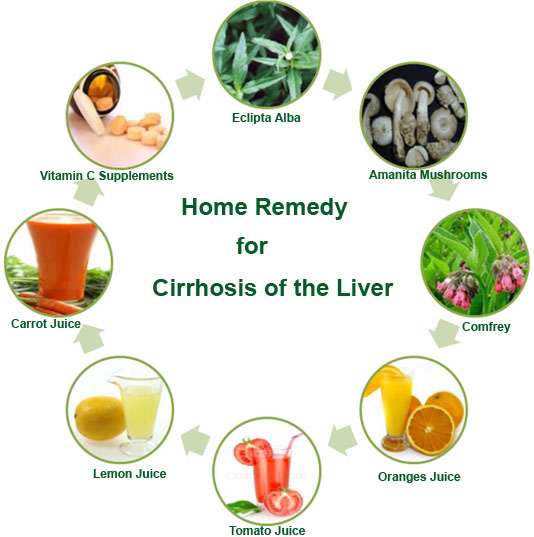How to treat liver cirrhosis naturally. Cirrhosis of the Liver: Symptoms, Natural Prevention, and Remedies
How does cirrhosis affect liver function. What are the main causes of liver cirrhosis. Can natural remedies help prevent or manage cirrhosis symptoms. What lifestyle changes support liver health.
Understanding Cirrhosis: A Serious Liver Condition
Cirrhosis is a progressive liver disease characterized by the development of scar tissue that impairs normal liver function. As healthy liver cells are replaced by scar tissue, the liver’s ability to perform crucial tasks becomes compromised. These tasks include filtering toxins from the blood, producing essential proteins, and regulating blood flow.
The severity of cirrhosis can vary, but in advanced stages, it can lead to liver failure and potentially life-threatening complications. While there is no cure for cirrhosis, early detection and appropriate management can slow its progression and improve quality of life.
What causes cirrhosis?
Several factors can contribute to the development of cirrhosis:
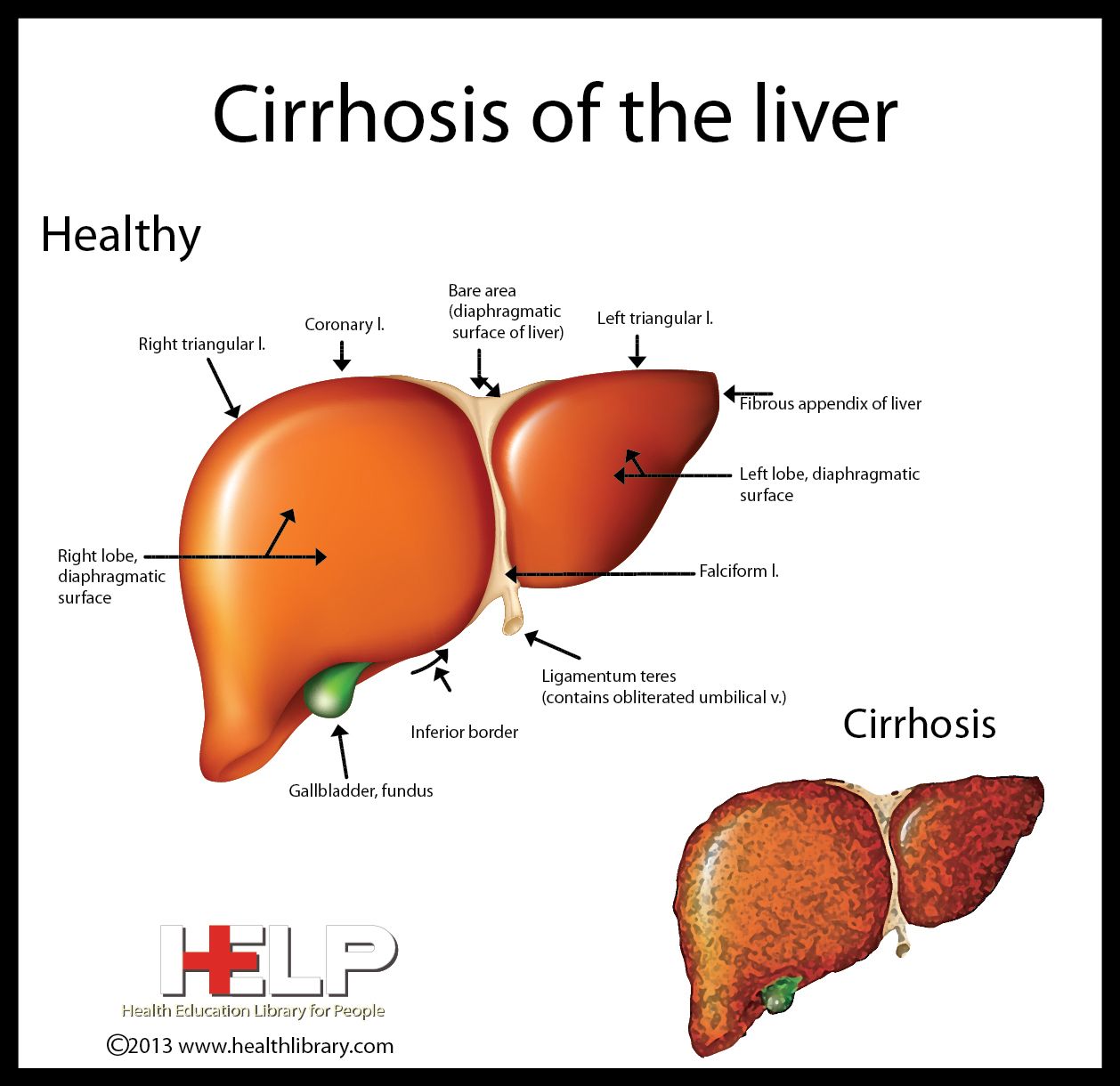
- Chronic alcohol abuse
- Nonalcoholic fatty liver disease (NAFLD)
- Viral hepatitis (particularly hepatitis B and C)
- Autoimmune liver diseases
- Inherited liver disorders
- Prolonged exposure to certain toxins or medications
Understanding the underlying cause is crucial for developing an effective treatment plan and preventing further liver damage.
Recognizing the Symptoms of Cirrhosis
Cirrhosis often develops silently, with symptoms only becoming apparent as the disease progresses. Early recognition of these signs can lead to timely intervention and better outcomes.
Common symptoms of cirrhosis include:
- Fatigue and weakness
- Loss of appetite
- Unexplained weight loss
- Nausea and abdominal pain
- Jaundice (yellowing of the skin and eyes)
- Itchy skin
- Swelling in the legs and abdomen
- Easy bruising or bleeding
- Confusion or difficulty concentrating (hepatic encephalopathy)
Are these symptoms specific to cirrhosis? While these symptoms can indicate cirrhosis, they may also be present in other liver conditions or health issues. It’s essential to consult a healthcare professional for an accurate diagnosis if you experience any of these symptoms persistently.
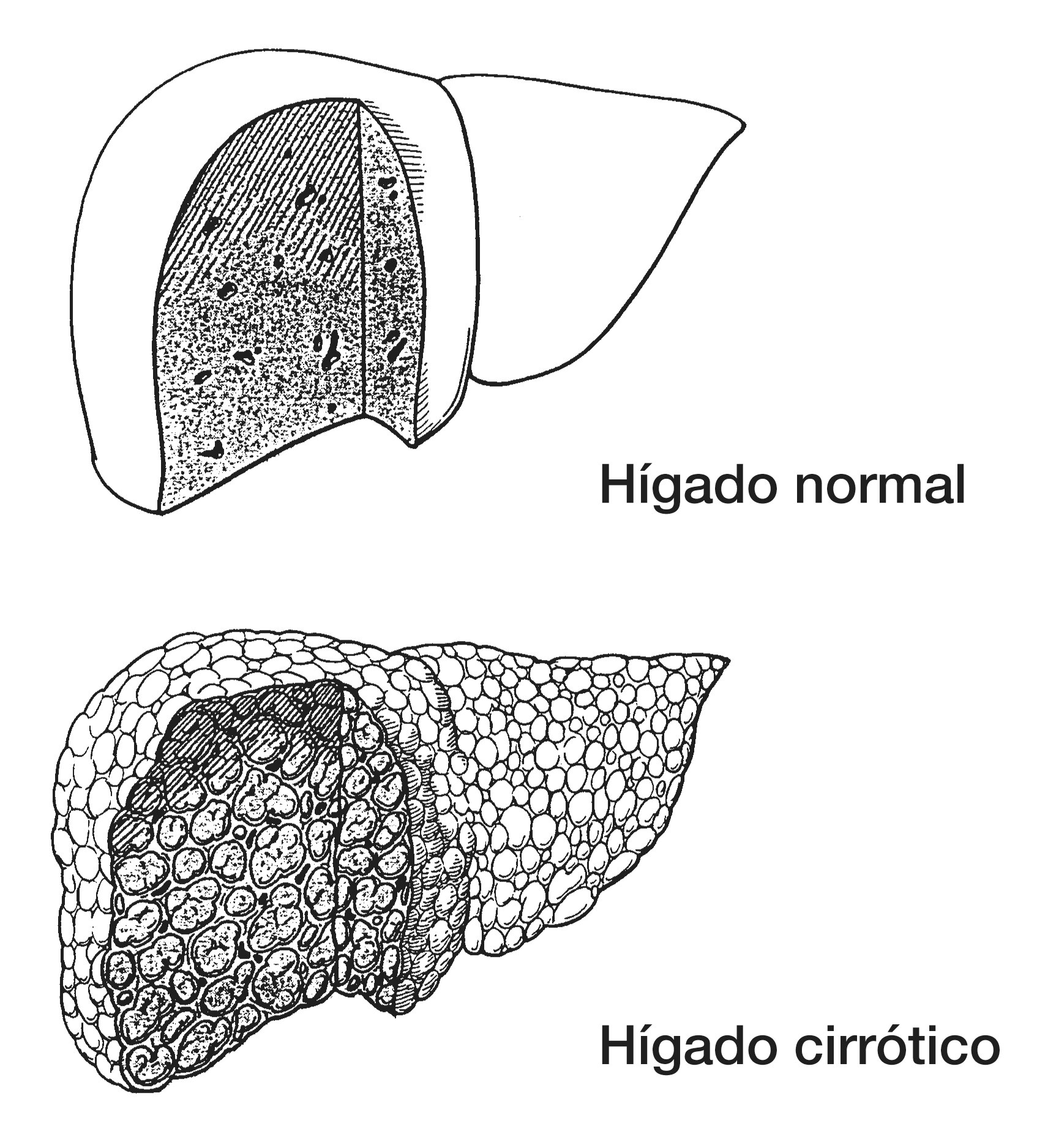
Natural Approaches to Liver Health and Cirrhosis Prevention
While medical treatment is crucial for managing cirrhosis, incorporating natural approaches can support overall liver health and potentially slow disease progression. These strategies focus on lifestyle modifications and dietary changes that promote liver function and reduce the burden on this vital organ.
Dietary modifications for liver health
A liver-friendly diet can make a significant difference in managing cirrhosis and supporting overall liver function. Consider incorporating these dietary strategies:
- Increase consumption of fruits, vegetables, and whole grains
- Choose lean proteins like fish, poultry, and plant-based options
- Limit saturated fats and avoid trans fats
- Reduce sodium intake to manage fluid retention
- Avoid alcohol completely
- Stay hydrated with water and herbal teas
How does diet impact liver health? A balanced, nutrient-rich diet provides the liver with essential vitamins and minerals needed for detoxification and repair processes. It also helps maintain a healthy weight, reducing the risk of fatty liver disease, a precursor to cirrhosis in many cases.

Herbal remedies and supplements
Certain herbs and supplements have shown promise in supporting liver health and potentially slowing the progression of cirrhosis. However, it’s crucial to consult with a healthcare provider before starting any new supplement regimen, especially if you have liver disease.
- Milk thistle: Contains silymarin, known for its antioxidant and anti-inflammatory properties
- Turmeric: Curcumin, its active compound, has potent anti-inflammatory effects
- Dandelion root: May support liver detoxification processes
- N-acetyl cysteine (NAC): An amino acid that supports glutathione production, crucial for liver health
- Vitamin E: An antioxidant that may help in cases of nonalcoholic fatty liver disease
Can these supplements reverse cirrhosis? While some studies suggest potential benefits, these supplements should not be considered a cure for cirrhosis. They may support liver health as part of a comprehensive treatment plan but should not replace medical advice or prescribed treatments.

Lifestyle Changes to Support Liver Health
Adopting a liver-friendly lifestyle is crucial for preventing cirrhosis and supporting overall liver function. These changes can complement medical treatments and potentially slow the progression of liver disease.
Exercise and weight management
Regular physical activity and maintaining a healthy weight are essential for liver health. Exercise helps reduce inflammation, improve insulin sensitivity, and promote healthy body composition, all of which benefit the liver.
- Aim for at least 150 minutes of moderate-intensity aerobic exercise per week
- Incorporate strength training exercises 2-3 times per week
- Choose activities you enjoy to maintain consistency
- Gradually increase intensity and duration as your fitness improves
How does exercise benefit the liver specifically? Physical activity helps reduce fat accumulation in the liver, improves blood flow, and enhances the liver’s ability to process and eliminate toxins. For individuals with cirrhosis, exercise should be tailored to their current health status and under medical supervision.
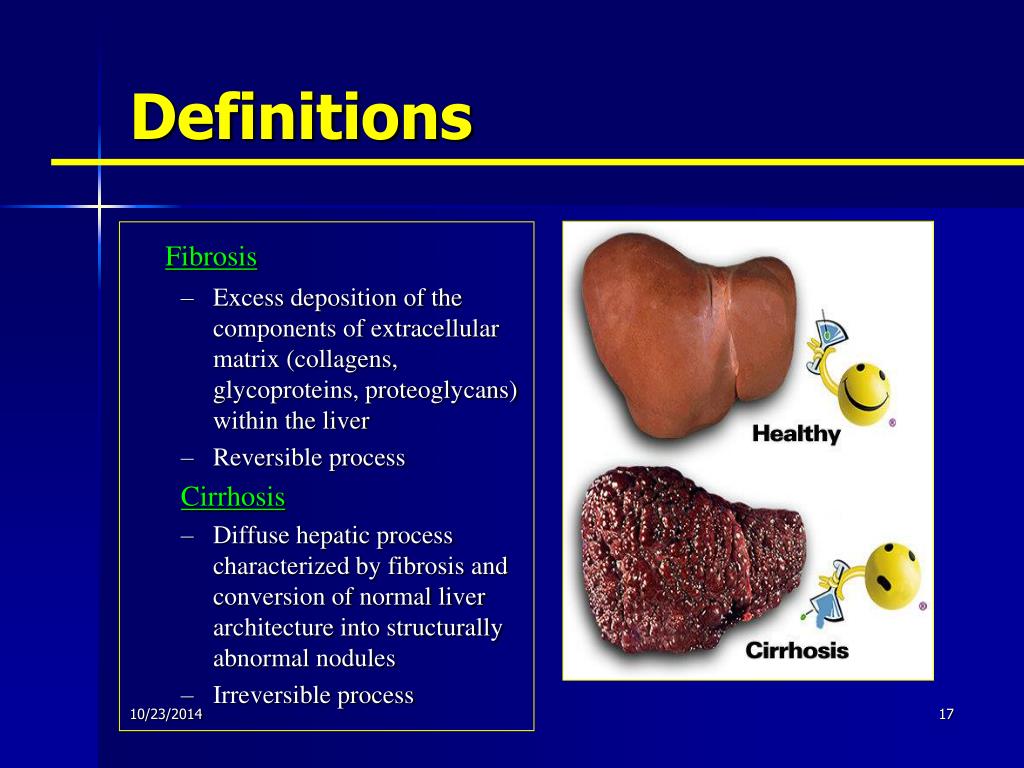
Stress management techniques
Chronic stress can negatively impact liver health by increasing inflammation and potentially exacerbating liver damage. Implementing stress-reduction strategies can support overall well-being and liver function:
- Practice mindfulness meditation or deep breathing exercises
- Engage in yoga or tai chi
- Prioritize adequate sleep (7-9 hours per night)
- Pursue hobbies and activities that bring joy and relaxation
- Consider counseling or therapy if stress levels are consistently high
Can stress management improve liver health outcomes? While more research is needed, reducing stress levels can positively impact overall health, potentially supporting liver function and enhancing the body’s ability to manage chronic conditions like cirrhosis.
Reducing Toxin Exposure for Liver Protection
The liver plays a crucial role in detoxifying harmful substances in the body. Minimizing exposure to toxins can significantly reduce the burden on the liver and support its function, particularly in individuals with cirrhosis or other liver conditions.
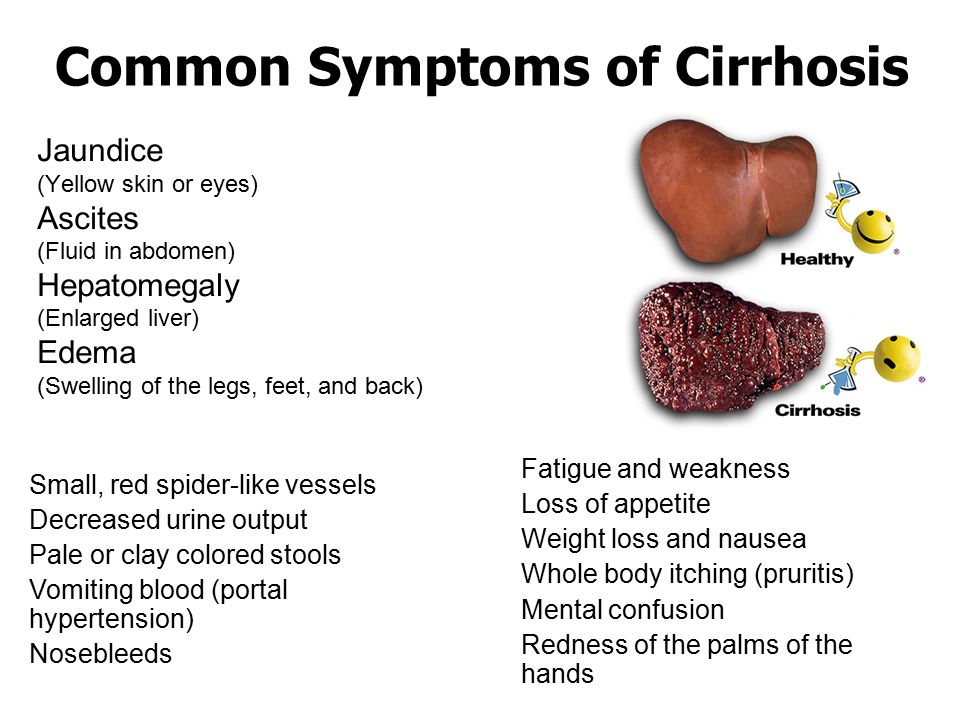
Alcohol and liver health
Alcohol is one of the most significant risk factors for liver disease and cirrhosis. For individuals with existing liver conditions, complete abstinence from alcohol is typically recommended.
- Eliminate all forms of alcoholic beverages
- Be aware of hidden sources of alcohol in certain foods and medications
- Seek support from healthcare providers or support groups if struggling with alcohol dependence
Is any amount of alcohol safe for liver health? For individuals with cirrhosis or advanced liver disease, no amount of alcohol is considered safe. Even for those with healthy livers, limiting alcohol intake can help protect long-term liver health.
Environmental toxins and chemicals
Reducing exposure to environmental toxins and chemicals can support liver health and overall well-being. Consider these strategies:
- Choose organic produce when possible to reduce pesticide exposure
- Use natural cleaning products or make your own with non-toxic ingredients
- Filter your drinking water to remove potential contaminants
- Avoid using plastic containers for food storage, especially when heating food
- Be cautious with personal care products, opting for those with fewer synthetic chemicals
How do environmental toxins affect liver health? The liver is responsible for processing and eliminating many environmental toxins. Chronic exposure to these substances can overburden the liver, potentially contributing to inflammation and cellular damage over time.
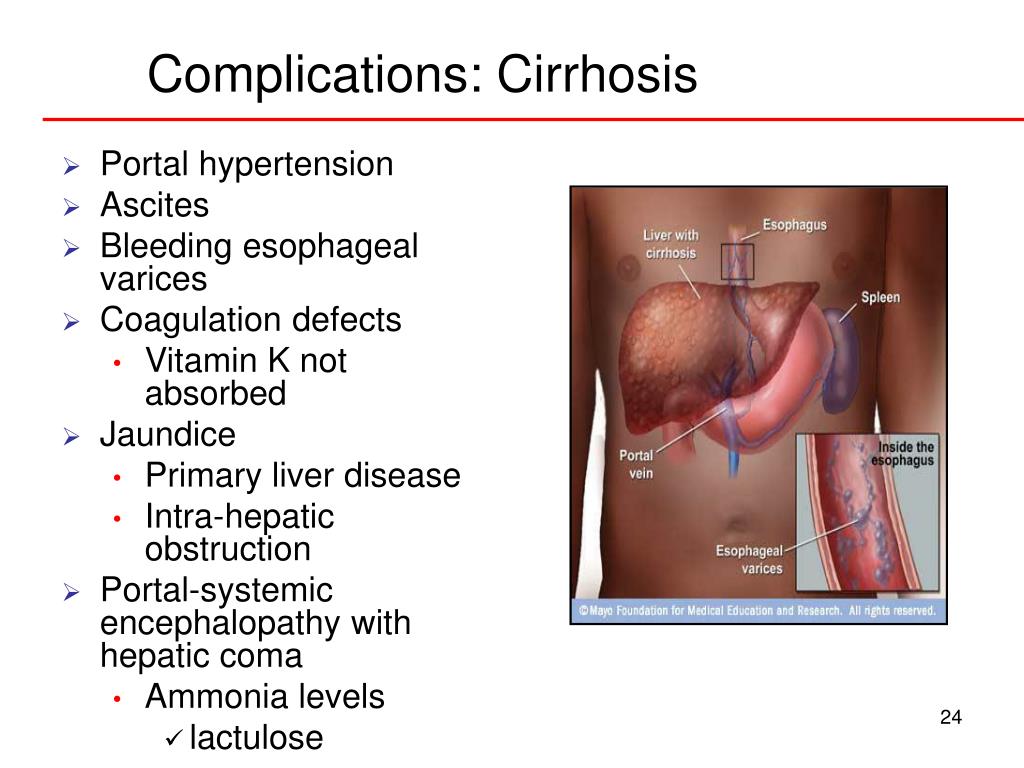
The Role of Hydration in Liver Health
Proper hydration is crucial for overall health and plays a significant role in supporting liver function. Adequate fluid intake helps the liver perform its detoxification processes more efficiently and supports overall metabolic health.
Benefits of staying hydrated
Maintaining proper hydration offers several benefits for liver health:
- Supports the liver’s ability to flush out toxins
- Helps prevent the formation of gallstones
- Aids in digestion and nutrient absorption
- Reduces the risk of constipation, which can strain the liver
- Helps maintain a healthy blood volume, supporting liver function
How much water should one drink for optimal liver health? While individual needs vary, a general guideline is to aim for 8-10 glasses (64-80 ounces) of water per day. However, individuals with cirrhosis may need to adjust their fluid intake based on their specific condition and any fluid retention issues.
Hydrating beverages for liver support
In addition to water, certain beverages can provide hydration while offering potential benefits for liver health:

- Green tea: Rich in antioxidants that may support liver function
- Lemon water: May aid in detoxification processes
- Cranberry juice (unsweetened): Contains compounds that may protect against liver damage
- Vegetable juices: Provide hydration along with beneficial nutrients and antioxidants
- Milk thistle tea: Known for its potential liver-protective properties
Are there any beverages to avoid for liver health? Sugary drinks, excessive caffeine, and alcohol should be limited or avoided, especially for individuals with liver conditions. Always consult with a healthcare provider for personalized recommendations.
Monitoring and Managing Cirrhosis: When to Seek Medical Care
While natural approaches can support liver health, it’s crucial for individuals with cirrhosis to work closely with healthcare providers to monitor their condition and adjust treatment plans as needed. Regular medical check-ups and screenings are essential for managing cirrhosis effectively.
Important medical screenings for cirrhosis
Several tests and screenings are commonly used to assess liver function and monitor the progression of cirrhosis:

- Liver function tests (blood tests)
- Imaging studies (ultrasound, CT scan, or MRI)
- Endoscopy to check for esophageal varices
- Alpha-fetoprotein (AFP) blood test to screen for liver cancer
- Liver biopsy in some cases
How often should these screenings be performed? The frequency of screenings depends on the individual’s specific condition and the stage of cirrhosis. Generally, liver function tests may be done every 3-6 months, while imaging studies might be performed annually or as recommended by the healthcare provider.
Recognizing emergency situations
Individuals with cirrhosis should be aware of signs that require immediate medical attention:
- Vomiting blood
- Black, tarry stools
- Fever with abdominal pain
- Severe abdominal swelling or pain
- Confusion or extreme drowsiness
- Jaundice that appears suddenly or worsens rapidly
When should someone with cirrhosis go to the emergency room? Any of the above symptoms, or a sudden worsening of existing symptoms, warrant immediate medical evaluation. Prompt treatment can be crucial in managing complications of cirrhosis.
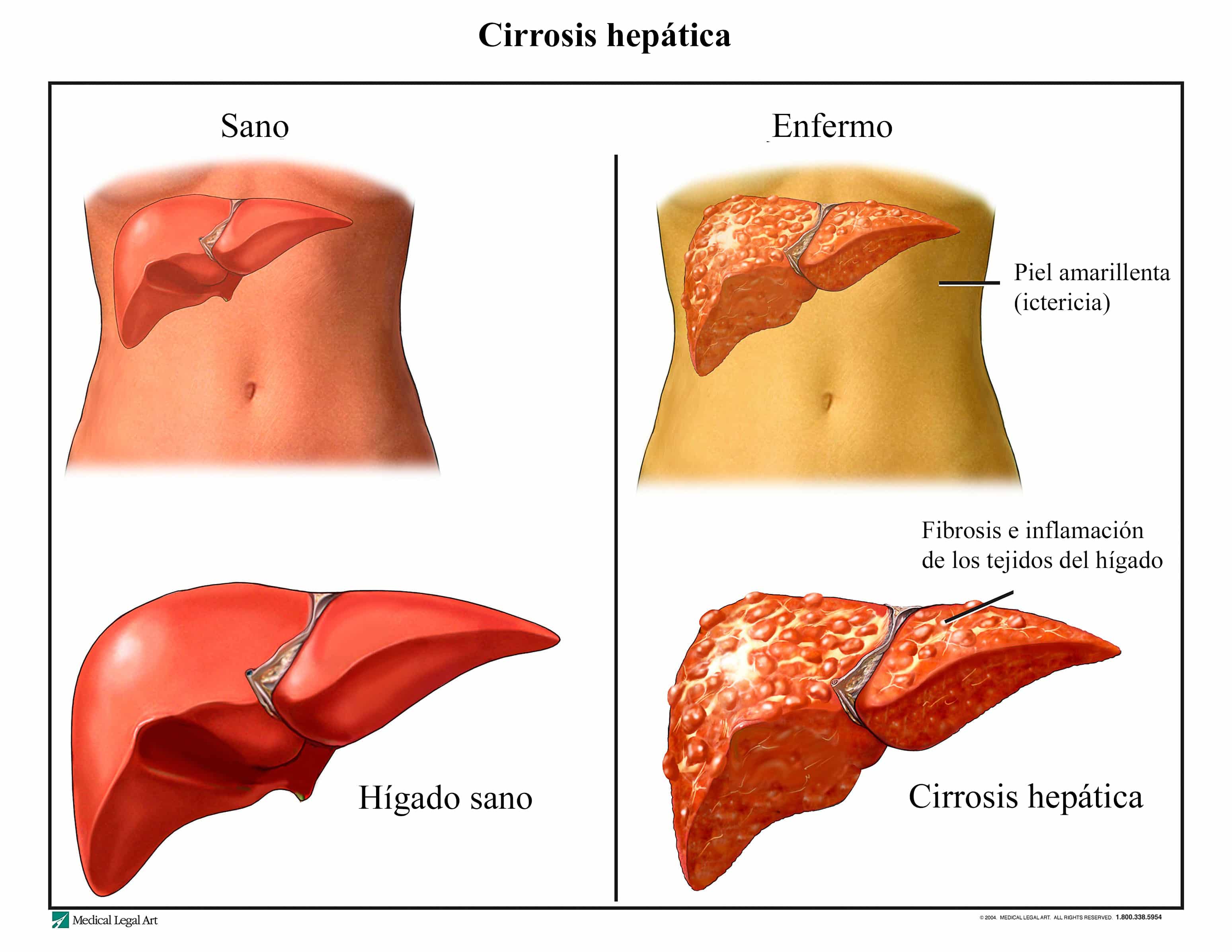
In conclusion, while cirrhosis is a serious condition, a combination of medical management and natural approaches can help individuals maintain liver health and potentially slow disease progression. By adopting a liver-friendly lifestyle, staying vigilant about symptoms, and working closely with healthcare providers, those affected by cirrhosis can take proactive steps towards better health outcomes. Remember, every individual’s situation is unique, and personalized medical advice is crucial for effectively managing cirrhosis and supporting overall liver function.
Cirrhosis Symptoms + Natural Prevention & Remedies
Fact Checked
This Dr. Axe content is medically reviewed or fact checked to ensure factually accurate information.
With strict editorial sourcing guidelines, we only link to academic research institutions, reputable media sites and, when research is available, medically peer-reviewed studies. Note that the numbers in parentheses (1, 2, etc.) are clickable links to these studies.
The information in our articles is NOT intended to replace a one-on-one relationship with a qualified health care professional and is not intended as medical advice.
This article is based on scientific evidence, written by experts and fact checked by our trained editorial staff. Note that the numbers in parentheses (1, 2, etc.) are clickable links to medically peer-reviewed studies.
Our team includes licensed nutritionists and dietitians, certified health education specialists, as well as certified strength and conditioning specialists, personal trainers and corrective exercise specialists. Our team aims to be not only thorough with its research, but also objective and unbiased.
Our team aims to be not only thorough with its research, but also objective and unbiased.
The information in our articles is NOT intended to replace a one-on-one relationship with a qualified health care professional and is not intended as medical advice.
By Jillian Levy, CHHC
March 10, 2017
Did you know that your liver is your largest internal organ (roughly the size of a football!)? Your hard-working liver, weighing roughly three to four pounds in total, sits just under your rib cage on the right side of your abdomen. It’s responsible for crucial functions like digesting your food, storing energy, and removing toxins from your body.
Few of us live in unpolluted environments and eat completely “clean” diets. As a result, many people experience a constant influx of toxins coming from the air, soil, water and food supply. These toxins can all cause your liver to become overworked and in need of a serious liver detox. In fact, a poorly working liver causes a whole range of symptoms that can affect nearly every system in the body. These include many symptoms that people don’t usually associate with a failing liver.
These include many symptoms that people don’t usually associate with a failing liver.
Some minor-to-moderate liver problems can be effectively managed or treated with lifestyle modifications alone. Losing weight, cleaning up your diet and stopping alcohol use can all help. But this isn’t always the case with cirrhosis of the liver. In fact, cirrhosis is a much more serious and advanced form of liver damage. Unfortunately, there is no cure for cirrhosis of the liver. However, there are treatments available that can limit risk for liver failure and other complications. (1)
What are some ways you can help prevent liver cirrhosis and other forms of liver disease from developing? When it comes to liver health, first and foremost eating a healthy diet is key. Your liver is one of the hardest-working organs. This is due to the enormous energy it takes to digest foods daily — especially when you’re eating a toxin-heavy, low-nutrient diet. Exercising regularly and reducing toxin exposure by limiting the amount of alcohol, medications, pesticides, herbicides and hormone-disruptors you consume are also beneficial for keeping your liver healthy.
Exercising regularly and reducing toxin exposure by limiting the amount of alcohol, medications, pesticides, herbicides and hormone-disruptors you consume are also beneficial for keeping your liver healthy.
Cirrhosis of the liver is a serious progressive disease in which scar tissue develops in the liver. As a result, it causes dysfunction that impacts essential processes like: blood flow, elimination of toxins and waste from the body, hormone levels, and digestion of certain essential nutrients.
According to the National Institute of Diabetes and Digestive and Kidney Diseases, the most common reasons why dangerous scar tissue replaces healthy liver tissue include alcohol abuse, a history of fatty liver disease and viruses such as hepatitis. Other factors like consuming a poor diet, genetics or a family history of liver disease, and having high cholesterol levels may also contribute to liver dysfunction and risk for cirrhosis. (2)
Cirrhosis is a condition in which the liver slowly deteriorates.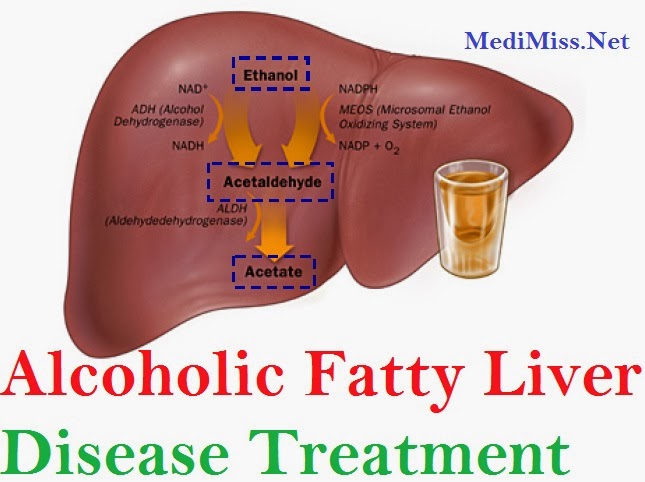 Unfortunately, if liver disease worsens enough to be considered “advanced stage cirrhosis,” liver failure, then liver cancer, might develop. At this point the condition, might be fatal and transplantation is usually considered the only curative option for most patients. But, luckily, lifestyle changes and some pharmacological therapies can help halt progression and even reverse cirrhosis to some extent. (3)
Unfortunately, if liver disease worsens enough to be considered “advanced stage cirrhosis,” liver failure, then liver cancer, might develop. At this point the condition, might be fatal and transplantation is usually considered the only curative option for most patients. But, luckily, lifestyle changes and some pharmacological therapies can help halt progression and even reverse cirrhosis to some extent. (3)
Common Symptoms of Cirrhosis & Complications
Many don’t notice any symptoms of liver damage or cirrhosis at first. Some of the common signs and symptoms of cirrhosis and other forms of liver disease include: (4)
- Lack of energy, or fatigue.
- Loss of appetite.
- Jaundice symptoms including skin and eyes that appear yellow.
- Digestive issues like nausea, vomiting, abdominal pain and cramping.
- Cognitive issues like confusion, disorientation, and mood or personality changes.
- Swelling in the legs and ankles.

- Skin problems like feeling itchy.
- Urine that’s dark in color (brown or yellow).
- Pale or dark tar-colored stool.
- Chronic fatigue syndrome.
- Changes in weight, usually loss due to less appetite.
- Tendency to bruise the skin easily.
Stages of Liver Cirrhosis
Liver disease is a serious problem that affects millions of people in the United States each year alone. The American Liver Foundation reports that liver disease affects one out of every 10 Americans. In fact, it’s one of the top 10 causes of death in the United States each year. (5) There are more than 100 types of different kinds of liver diseases including: fatty liver syndrome, jaundice, cirrhosis, genetic disorders, and various viruses like hepatitis A, hepatitis B and hepatitis C.
Cirrhosis of the liver means major life expectancy shortening. Sadly, the median survival time of patients with advanced cirrhosis is 1-2 years. (6) In its earlier stages, liver disease and even cirrhosis might not cause any symptoms at all. Because of this, causes or risk factors that are making the condition even worse might not be addressed. Early in the disease, symptoms like low energy, skin changes, swelling/edema and nutrient deficiencies might be the first to appear. Over time, if the liver becomes very damaged, it develops scarring that’s indicative of cirrhosis. This can eventually lead to liver failure, which can be fatal, although not everyone with liver disease will wind up becoming this sick. Complications due to cirrhosis can occur as scarring continues to worsen, which include:
(6) In its earlier stages, liver disease and even cirrhosis might not cause any symptoms at all. Because of this, causes or risk factors that are making the condition even worse might not be addressed. Early in the disease, symptoms like low energy, skin changes, swelling/edema and nutrient deficiencies might be the first to appear. Over time, if the liver becomes very damaged, it develops scarring that’s indicative of cirrhosis. This can eventually lead to liver failure, which can be fatal, although not everyone with liver disease will wind up becoming this sick. Complications due to cirrhosis can occur as scarring continues to worsen, which include:
- Portal hypertension: Fluid buildup leading to edema, risk for infections, enlarged blood vessels, enlarged spleen, mental confusion and other issues.
- Edema and ascites: Bacterial peritonitis, a serious infection.
- Varices: Enlarged blood vessels in the esophagus, stomach, or both, which can lead to bursting and deadly bleeding.

- Spleen problems that cause blood changes: Changes in blood cells and platelets in the blood.
- Hepatic encephalopathy: Toxins accumulating in the brain, which can cause cognitive changes.
- Metabolic bone diseases: Leading to changes in mineral levels and osteopenia, or bone loss.
- Gallstones and bile duct stones.
- Sensitivity to medications.
- Chronic conditions like insulin resistance and type 2 diabetes.
- Weakened immune system & higher risk for infection.
- Higher risk for kidney and lung failure.
- Potentially liver cancer: Liver cancer is common in people with cirrhosis.
Cirrhosis Causes and Risk Factors
Most people associate liver disease with alcoholism. But, anything your body can’t break down and use for energy immediately ends up in the liver for detoxification. Because of this, your liver needs all the help it can get. When you overindulge in alcohol, chemicals, drugs, fried foods, processed or refined foods (white flour, conventional dairy, white sugar and low quality animal products, for example), your liver gets heavily taxed and might not be able to keep up. The result is scarring and loss of healthy liver cells (in other words, cirrhosis).
The result is scarring and loss of healthy liver cells (in other words, cirrhosis).
Risk factors for cirrhosis include: (7)
- History of fatty liver disease.
- Drinking too much alcohol.
- Drug use and smoking.
- A poor diet (low in things like veggies, herbs and fruit, but high in processed foods, sugar, salt and saturated fat).
- History of diabetes or metabolic syndrome.
- Obesity.
- High cholesterol and triglyceride levels.
- Chronic viruses and infection.
- High amounts of exposure to toxins and environmental pollutants.
- Taking certain medications.
- Genetic factors.
- History of other diseases that damage, destroy, or block the bile ducts and interfere with processes of the digestive organs.
Avoiding a highly processed diet and too much alcohol are two cirrhosis risk factors that you have a lot of control over. The reason vegetables (and making vegetable juices) are so important for your liver is because they provide crucial electrolytes, phytonutrients, enzymes and antioxidants. Vegetables and certain fruits (especially citrus like lemons and limes) also help to reduce acid levels in the body, which creates a more friendly pH balance and can prevent low potassium levels that are linked to liver damage. Additionally, these whole plant foods provide much needed dietary fiber that helps support a healthy digestive tract and gut environment. Regulating digestive function is crucial for liver health because producing a daily bowel movement is how you eliminate toxins from your body once the liver produces them.
Vegetables and certain fruits (especially citrus like lemons and limes) also help to reduce acid levels in the body, which creates a more friendly pH balance and can prevent low potassium levels that are linked to liver damage. Additionally, these whole plant foods provide much needed dietary fiber that helps support a healthy digestive tract and gut environment. Regulating digestive function is crucial for liver health because producing a daily bowel movement is how you eliminate toxins from your body once the liver produces them.
Conventional Treatment for Cirrhosis
Treatment for cirrhosis will depend on what’s causing it in the first place and how severe the condition has become. Doctors often use a combination of treatment methods including medications and lifestyle changes. While there is no “cure” for cirrhosis, there are a wide variety of management techniques used to control the symptoms of cirrhosis:
- Eliminating alcohol and drug intake.

- Diuretics to control edema (fluid retention) and ascites (fluid in the abdomen).
- Eating a less processed diet, increasing nutrient intake and reducing salt intake.
- Weight loss strategies and those used to control cholesterol levels.
- Cognitive therapies and sometimes medications to improve mood or mental dysfunction.
- Laxatives to improve elimination of toxins.
- In the case of hepatitis, use of medications like steroids or antiviral drugs.
- In severe cases, due to liver failure, liver transplantation may be needed.
8 Natural Ways to Cope With Liver Cirrhosis
1. Regularly Try To “Cleanse The Liver”
Many ancient populations, including the Chinese, considered the liver to be the most important organ — hence the word “live” in its name. If you haven’t been eating a vegetable-based diet, regularly getting exercise, and making sure to limit your alcohol and toxin exposure — then just like most people, you might be in need of a liver cleanse.
To keep your liver properly filtering toxins from the food, water, and air you come into contact with, here’s a list of some specific foods that can help:
- dark green, leafy vegetables
- steamed and raw vegetables, or drinking vegetable juices
- citrus fruits
- sweet potatoes, bananas, avocados (great sources of potassium)
- milk thistle seed (tea or extract)
- turmeric (spice or tablet)
- ginger
- “superfoods” including spirulina, chlorella, and wheatgrass
- probiotic foods and supplements
- dandelion root tea
- burdock root
- black seed oil
- fresh squeezed lemon juice
- A detoxing tea or dandelion tea
- extra virgin olive oil and coconut oil
- raw apple cider vinegar
- beef liver and other organ meats
And here are foods to avoid that can add stress to your liver:
- overeating
- overly spicy foods
- fried foods
- refined carbohydrates, including those containing gluten
- sugar
- too much caffeine (black tea, coffee, soda)
- alcohol
- rich, complicated meals (combining too many different food types at once)
2. Eat An Anti-Inflammatory Diet, Focusing On Organic Foods
Eat An Anti-Inflammatory Diet, Focusing On Organic Foods
Just like chronic alcohol abuse can cause fatty liver disease, so can poor dietary choices (nonalcoholic fatty liver disease). In fact, a diet high in low-quality saturated fats, fried foods, chemicals and processed foods can raise the risk for liver disease. As a result, high levels of triglycerides and cholesterol in the blood are two serious risk factors for liver damage and cirrhosis.
Regularly consuming enough (ideally organic) vegetables and other whole foods is the key to maintaining a healthy liver. It’s important to eat a variety of raw vegetables for the most liver benefits, ideally around 4-5 servings of fresh, organic vegetables everyday. If this seems overwhelming, you can try juicing fresh vegetables (just watch the sugar content!). If you already suffer from liver damage of any kind, juicing vegetables to make a homemade detox drink is a great option because it makes the vegetables easier to digest and doesn’t require the production of as much bile.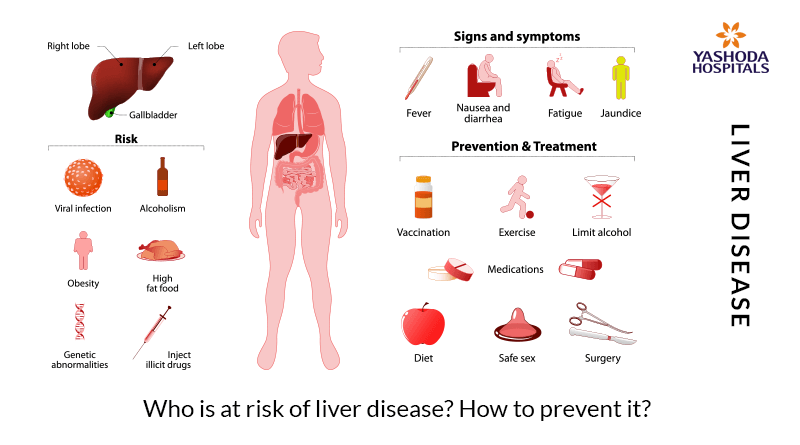
To put less strain on your liver, limit the saturated fats you eat to only high quality, grass-fed, cage-free or pasture-raised animal products, since conventionally raised (farm raised) animals tend to store the most toxins in their fat. Focus on making your fat sources very high quality ones — things like coconut oil, nuts, seeds and wild seafood. In general, the less foods you eat that come out of a package or box, the better. That’s because “convenience foods” are loaded with chemical preservatives, fillers, synthetic flavors and so on. For example added nitrates are commonly found in packaged meats and are known to tax the liver, as is sugar and hydrogenated oils (trans-fats) found in commercial baked goods.
As often as you can, include these liver-supporting veggies in your meals:
- cauliflower
- broccoli
- leafy greens like kale, spinach, dandelion, watercress
- Brussels sprouts or cabbage
- celery
- asparagus
- beets
- carrot
- cucumber
- herbs including parsley, mint, cilantro, basil
Try to purchase organic foods as much as possible. Your liver pays the price for a diet that’s high in chemicals, pesticides and other toxins. For this reason, choosing to buy as many organic foods as you can is important for preventing liver problems and potentially liver disease. Just by focusing on buying organic varieties of the toxin-heavy “dirty dozen” fruits and vegetables, you can dramatically lower your intake of toxins. This is a helpful list of the types of produce that are most contaminated with toxins, and those that are the least contaminated.
Your liver pays the price for a diet that’s high in chemicals, pesticides and other toxins. For this reason, choosing to buy as many organic foods as you can is important for preventing liver problems and potentially liver disease. Just by focusing on buying organic varieties of the toxin-heavy “dirty dozen” fruits and vegetables, you can dramatically lower your intake of toxins. This is a helpful list of the types of produce that are most contaminated with toxins, and those that are the least contaminated.
3. Reduce Your Alcohol Intake, Quit Smoking & Avoid Other Drugs
High alcohol intake is most closely tied to fatty liver disease, which is the build-up of fat in liver cells that causes swelling and cirrhosis. While moderate amounts of alcohol can sometimes be good for you if you’re otherwise healthy, chronic intake of high amounts of alcohol causes damage to many organs, the liver being the most affected. Drinking high amounts of alcohol is one of the fastest ways to damage or destroy liver cells — and alcohol combined with prescription or over-the-counter medications, cigarettes or a poor diet is even more harmful.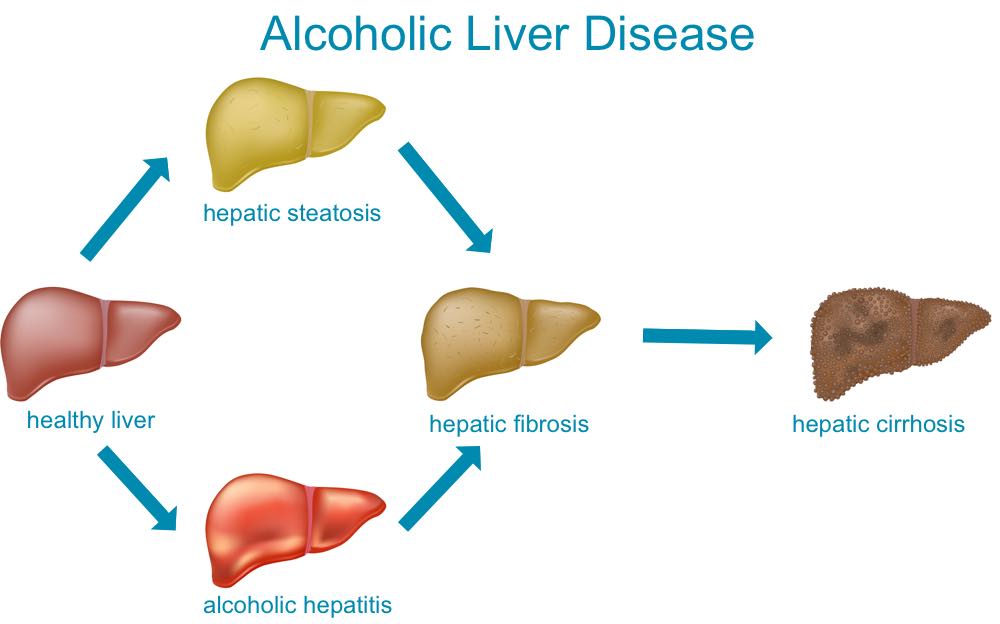
Limit your alcohol intake to the “healthy” range for most adults, which is no more than 1-2 drinks daily (or about 30 grams, considered the “safe” amount). If you have any known liver problems, or are someone who can afford to detoxify your system for other reasons, having even less than this is a good idea.
4. Support The Liver With Supplements
Supplements, herbs and spices including turmeric, milk thistle, probiotics and ginger root can help produce proper bile and enzymes, sooth the digestive tract, reduce intestinal gas, and lower inflammation:
- Milk Thistle is considered the “king” of detoxifying herbs. It has been used for centuries to help cleanse the liver and eliminate the buildup of heavy metals, prescriptions, pollutants and alcohol.
- Turmeric is a powerful anti-inflammatory that not only aids in digestion, but also helps to restore a healthy blood sugar balance, which supports liver metabolism.

- Recent research also suggests that probiotics can be helpful for liver health because intestinal microbiota play an important role in detoxification and metabolic processes. Altered intestinal permeability (also called leaky gut syndrome) might change the way that the liver functions and can make hepatic disorders worse. In the future, health-promoting microbial strains and probiotic foods likely will be recommended to liver disease patients to help lower harmful interactions and restore the body’s immune responses.
- Many of the foods or supplements listed above are also great sources of much-needed nutrients like potassium, vitamin C, vitamin A, and vitamin B-6. Potassium-rich foods are especially beneficial because they help to lower systolic blood pressure, lower cholesterol, and reduce triglyceride levels.
5. Maintain a Healthy Weight
Liver disease that’s associated with obesity is now the most prevalent liver disease in Western countries. Obesity can cause nonalcoholic fatty liver disease and is related to a dramatically higher risk for developing other liver problems, too, in some cases. Metabolic syndrome is the term for a combination of factors including being overweight and having high blood pressure, high blood sugar, too much fat around the waist, low HDL (“good”) cholesterol, and high triglycerides. These factors all raise the odds of someone suffering from liver damage, not to mention heart disease, diabetes and stroke.
Obesity can cause nonalcoholic fatty liver disease and is related to a dramatically higher risk for developing other liver problems, too, in some cases. Metabolic syndrome is the term for a combination of factors including being overweight and having high blood pressure, high blood sugar, too much fat around the waist, low HDL (“good”) cholesterol, and high triglycerides. These factors all raise the odds of someone suffering from liver damage, not to mention heart disease, diabetes and stroke.
Recent research published in the Journal of Endocrinology and Metabolism suggests that obese adults have anywhere between 3-15 times the risk for developing liver disease than adults at a healthy weight. (8) That’s because being overweight alters the level of fatty acids and enzymes that your liver produces. Nonalcoholic fatty liver disease (NAFLD) occurs when the rate of fatty acid uptake and synthesis is greater than the rate of fatty acid oxidation and export. This process is called “steatosis” and the result is an excessive amount of triglycerides are produced by the liver. (9)
(9)
Steatosis is associated with harmful changes in glucose, fatty acid and lipoprotein metabolism that can all increase fat-storage (adipose tissue), systemic inflammation, insulin resistance, dyslipidemia and other cardiometabolic risk factors. To lower your odds of having high triglycerides, make sure to keep the amount of sugar and packaged foods you eat low and focus on a nutrient-dense diet made up of whole foods.
6. Reduce Toxin Exposure In Other Ways
We all come into contact daily with various forms of toxins through the air we breath, foods we eat and products we use. Do your best to avoid breathing in or touching toxins, especially by limiting the amount of chemical household, cleaning and beauty products you use. Chemicals found in aerosol products, insecticides, synthetic beauty products, and additives in cigarettes all injure liver cells.
7. Check Your Medications
The liver is responsible for sorting through chemicals in your bloodstream. These include those you intentionally ingest from prescription medications, birth control pills, hormone replacement drugs and others. Many experts believe that a large percentage of common medications are over-prescribed today, or taken incorrectly and mixed with the wrong things — including antibiotics and pain killers. If you do take medications regularly, learn about how they can affect your liver. Carefully follow dosing instructions. Ask your doctor to find out if there are any natural remedies that you could use instead.
These include those you intentionally ingest from prescription medications, birth control pills, hormone replacement drugs and others. Many experts believe that a large percentage of common medications are over-prescribed today, or taken incorrectly and mixed with the wrong things — including antibiotics and pain killers. If you do take medications regularly, learn about how they can affect your liver. Carefully follow dosing instructions. Ask your doctor to find out if there are any natural remedies that you could use instead.
8. Prevent Infections & Viruses That Can Damage The Liver
Liver diseases including hepatitis A, B and C are caused by viruses that are transmitted from person to person. These can cause the liver to swell up, develop cirrhosis, not work properly and potentially experience failure. They can even lead to liver cancer and be fatal. Most health authorities state that getting proper vaccinations is the best way to prevent hepatitis A and B. There isn’t a vaccine as of now for hepatitis C.
There isn’t a vaccine as of now for hepatitis C.
In fact, the only way to prevent hepatitis C infection is to avoid exposure to blood carrying the virus through prevention methods. These methods include practicing safe sex, not sharing needles, razors, toothbrushes or personal items, and always washing your hands with soap and warm water immediately after using a bathroom or touching someone’s blood.
Precautions When Treating Cirrhosis
Talk to your doctor if you notice any early warning signs of liver damage. Remember that stopping liver damage before it progresses is very important. However, there are often no symptoms of fatty liver disease; you may live with the condition and not realize it. Over time — sometimes it can take years or even decades — some signs may begin to surface. This is exactly the time you want to tackle the root causes. Early symptoms of liver disease include: unexplained fatigue, weight loss, loss of appetite, weakness, nausea, confusion or trouble concentrating and pain in the center or right upper part of belly.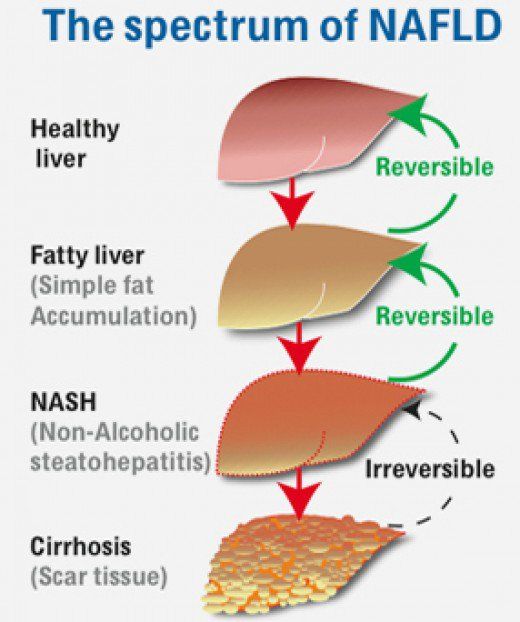
Final Thoughts on Cirrhosis of the Liver
- Cirrhosis is a serious, late stage of liver disease characterized by tissue scarring within the liver.
- The causes of cirrhosis are the same as other types of liver diseases and conditions, such as hepatitis or other viruses: poor diet, obesity, alcohol abuse and history of metabolic syndrome.
- Symptoms of cirrhosis include swelling, lack of energy skin changes (jaundice), digestive issues and cognitive changes.
- Natural treatments and prevention include preventing viruses, improving your diet, avoiding too much alcohol, maintaining a healthy weight and limiting toxin exposure.
Read Next: How to Improve Liver Function in 6 Steps
Causes, Signs, Stages, & Treatments
Excessive consumption of alcohol leads to complications associated with liver damage, like cirrhosis. The inquiry into home remedies for cirrhosis of liver is on the rise, keeping in tandem with the prevalence of alcoholism. That is not surprising, as overconsumption of alcohol has been linked with deterioration of liver health.
That is not surprising, as overconsumption of alcohol has been linked with deterioration of liver health.
Liver cirrhosis is a painful condition and requires home remedies or medications and major lifestyle modifications to be resolved. Keep reading to know how this life-threatening condition may be cured using simple and effective natural remedies.
In This Article
What Is Cirrhosis Of The Liver?
Cirrhosis of the liver is a slowly progressing disease that causes scar tissues to replace healthy liver tissues. The build-up of these scar tissues might even stop the functioning of the liver eventually.
Cirrhosis develops when there is long-term and continuous damage to your liver cells. When your healthy liver tissues are destroyed and completely replaced by scar tissues, it may lead to complications as the blood flow to your liver is blocked.
Did You Know?
René Laennec first termed the word ‘cirrhosis’ in 1819, deriving it from the Greek word ‘kirrhos’, which means the tawny or tan color of the affected liver.
Let us now take a look at the causes of this condition.
What Causes Cirrhosis Of The Liver?
Cirrhosis of the liver can be caused by:
- Long-term alcohol abuse
A 2018 study in The Lancet looked at the relative risk of liver cirrhosis based on alcohol consumption, including if it was usually taken with meals. According to the study, cirrhosis incidence rose with total alcohol intake in middle-aged women, even at moderate levels of consumption. If alcohol is regularly consumed without meals or on a daily basis for a week, the risk of cirrhosis becomes significantly higher.
Relative Risk (RR) Of Liver Cirrhosis By The Amount Of Alcohol Consumed And Whether It Was Usually With Meals
Source: Alcohol drinking patterns and liver cirrhosis risk: analysis of the prospective UK Million Women Study
- Hepatitis B or C infections
- Medical conditions like fatty liver disease
- Genetic disorders like hemochromatosisi XA condition in which the body absorbs too much iron from the food you intake and causes multiple organ dysfunction.
 and Wilson’s diseasei XA rare inherited disorder that occurs when the body accumulates excessive amounts of copper, especially in the liver and brain. that cause accumulation of iron or copper in the liver
and Wilson’s diseasei XA rare inherited disorder that occurs when the body accumulates excessive amounts of copper, especially in the liver and brain. that cause accumulation of iron or copper in the liver - Intake of toxic metals
- Untreated jaundice
- Blockage of the bile ducts due to cancer of the bile duct or pancreas
Some factors that may increase your risk of developing cirrhosis of the liver include:
- Regular consumption of alcohol
- Autoimmune diseases
- Ingestion or inhalation of toxic substances
- A family history of liver disease
- Certain medications
- Obesity
Cirrhosis of the liver may have varying symptoms, depending on its stage. Let us first understand the different stages before looking at the symptoms.
Stages Of Liver Cirrhosis
Liver cirrhosis has four stages:
- Stage 1 – Extremely Mild
- Stage 2 – Relatively Mild
- Stage 3 – Moderate
- Stage 4 – Severe
Did You Know?
Different stages of liver cirrhosis have a specific name. Stage 1 is called steatosis, stage 2 is called scarring, stage 3 is called cirrhosis, and stage 4 is liver failure or hepatic failure.
Stage 1 is called steatosis, stage 2 is called scarring, stage 3 is called cirrhosis, and stage 4 is liver failure or hepatic failure.
These stages are characterized by the following symptoms.
Stage 1 Symptoms
- Fatigue
- Tiredness
- Liver Inflammation and swelling
Stage 2 Symptoms
- Increased blood pressure in the veins of the liver
- Dilation of veins around the stomach
- Restricted blood flow to the liver
- Severe swelling of the liver
Stage 3 Symptoms
- Accumulation of fluid in the stomach cavity
- Eczema
- Itchiness
- Loss of appetite
- Weight loss
- Fatigue
- Weakness
- Confusion
- Swelling
- Pale or yellow skin
- Difficulty in breathing
Stage 4 Symptoms
Most of the symptoms in this stage are similar to that of stage 3. It may also cause:
- The dilated veins around your abdomen to rupture and bleed
- Intensified confusion
- Hand tremors
- Infection of the abdominal cavity
- High fever
- Behavioral changes
- Kidney failure
- Infrequent urination
This is the last stage of cirrhosis of the liver, and there is absolutely no cure for this.
Other chronic liver diseases to watch out for include non-alcoholic fatty liver disease (NAFLD), alcoholic liver disease (ALD), hepatitis b, hepatitis c, viral hepatitis, alcoholic hepatitis, primary biliary cholangitis (PBC), primary sclerosing cholangitis (PSC), autoimmune hepatitis, hemochromatosis, Wilson’s disease, alpha-1 antitrypsin deficiency, liver cancer, and drug-induced liver injury (DILI). Some of these diseases may have similar symptoms to cirrhosis. So it is very important that you get checked by a doctor before trying any treatment on your own.
As per the data from the Centers for Disease Control and Global Burden of Disease Study, 1.5 billion persons had chronic liver disease and cirrhosis in 2017. Of these, the most common are NAFLD (60%), hepatitis B (29%), hepatitis C (9%), and ALD (2%). Also, cirrhosis prevalence and mortality have increased in recent years in the United States, accounting for more than 44,000 deaths in the country.
It is very important to avail treatment as soon as you notice the functioning of your liver deteriorating to successfully combat liver cirrhosis. The following are some quick and effective remedies that will help you combat the symptoms of cirrhosis of the liver and prevent further damage to the organ.
The following are some quick and effective remedies that will help you combat the symptoms of cirrhosis of the liver and prevent further damage to the organ.
How To Treat Cirrhosis Of The Liver Naturally
- Milk Thistle
- Turmeric
- Papaya Seeds
- Vitamin C
- Ginger
- Carrot Seed Oil
- Apple Cider Vinegar
- Flaxseeds
- Burdock Root
- Coconut Oil
- Green Tea
Natural Remedies To Treat Cirrhosis
1. Milk Thistle
Image: Shutterstock
You Will Need
- 1-2 teaspoons of milk thistle tea
- 1 cup of hot water
- Honey
What You Have To Do
- Add one to two teaspoons of milk thistle tea to a cup of steaming hot water.
- Steep for 5 to 10 minutes and strain.
- Add a little honey to the warm tea before drinking.
How Often You Should Do This
Drink this tea 2 to 3 times daily.
Why This Works
Milk thistle contains a compound called silymarin that exhibits antioxidant and detoxifying properties. These help in detoxifying the liver, combating the symptoms of cirrhosis (1).
These help in detoxifying the liver, combating the symptoms of cirrhosis (1).
2. Turmeric
Image: Shutterstock
You Will Need
- 1 teaspoon of turmeric powder
- 1 glass of hot milk
What You Have To Do
- Add a teaspoon of turmeric powder to a glass of hot milk and stir well.
- Consume it immediately.
How Often You Should Do This
Drink turmeric milk once daily.
Why This Works
The curcumin in turmeric makes it a powerful antioxidant that can repair the damage caused by free radicals (2), (3). It can also restore the functioning of the liver.
3. Papaya Seeds
Image: Shutterstock
You Will Need
- Papaya seeds
- 10 drops of lemon juice
- Water
What You Have To Do
- Crush some papaya seeds to extract the juice.
- Take a tablespoon of this juice and mix it with 10 drops of lemon juice.
- Add this mixture to a glass of water and consume immediately.

How Often You Should Do This
You must drink this mixture twice daily for optimum benefits.
Why This Works
Papaya seeds contain enzymes like papain that protect your organs from free radical damage. They also contain many vital nutrients that can help in healing liver cirrhosis (4).
4. Vitamin C
Image: Shutterstock
You Will Need
500-5000 mg vitamin C supplements
What You Have To Do
Take 500 to 5000 mg vitamin C supplements.
How Often You Should Do This
You must do this once daily.
Why This Works
Vitamin C supplements can heal cirrhosis of the liver as they help in flushing out toxins and fat from the liver. They can also prevent fat build-up in the liver as vitamin C deficiency is one of the many causes of liver diseases (5).
5. Ginger
Image: Shutterstock
You Will Need
- 1 inch of ginger
- 1 cup of hot water
- Honey
What You Have To Do
- Add an inch or two of ginger to a cup of steaming hot water.

- Steep for 5 to 10 minutes and strain.
- Add some honey to the tea before consuming to beat the strong flavor.
How Often You Should Do This
Drink this concoction 3 to 4 times daily.
Why This Works
Ginger is another natural remedy that can help treat liver cirrhosis with its powerful antioxidant and hypolipidemici XAn agent that reduces the level of lipids and lipoproteins in the blood (mode of transport for cholesterol through the bloodstream). effects. These effects help in flushing fat and toxins out of your liver and restore its healthy cells (6).
6. Carrot Seed Oil
Image: Shutterstock
You Will Need
- 12 drops of carrot seed oil
- 30 mL of any carrier oil
What You Have To Do
- Mix 12 drops of carrot seed oil with 30 mL of any carrier oil.
- Apply this mixture below your right rib cage and spread it across your abdomen and back.
How Often You Should Do This
You must do this twice daily, preferably every morning and night.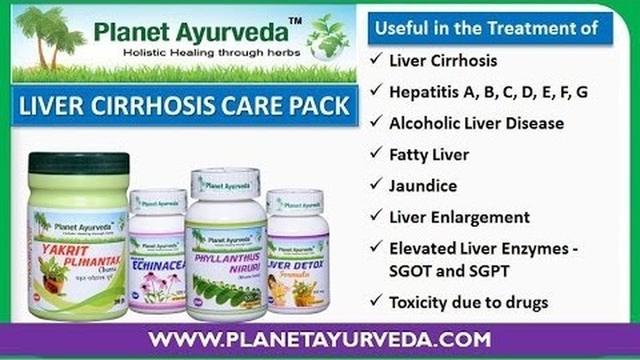
Why This Works
Carrot seed oil is hepatic and is known to detoxify your liver and regenerate the healthy cells of the liver tissues (7). Hence, it is a great remedy to combat cirrhosis of the liver.
7. Apple Cider Vinegar
Image: Shutterstock
You Will Need
- 1 tablespoon of apple cider vinegar
- 1 teaspoon of honey
- 1 glass of warm water
What You Have To Do
- Add a tablespoon of apple cider vinegar to a glass of warm water.
- Mix well and add a teaspoon of honey to it.
- Consume immediately.
How Often You Should Do This
Drink this solution 1 to 2 times daily for a couple of months.
Why This Works
Apple cider vinegar contains acetic acid, which speeds up the metabolism of fat inside your body. Acetic acid also helps with detoxification of the liver (8).
8. Flaxseeds
Image: Shutterstock
You Will Need
- 1 tablespoon of powdered flaxseeds
- 1 glass of warm water
- Lemon juice (optional)
What You Have To Do
- Add a tablespoon of powdered flaxseeds to a glass of warm water.

- Mix well and consume immediately.
- For added flavor, you can add some lemon juice and honey to the flaxseed mixture.
How Often You Should Do This
Drink this concoction 1 to 2 times daily.
Why This Works
The presence of omega-3 fatty acids makes flaxseeds one of the best remedies for treating cirrhosis of the liver. They help in reducing the inflammation and damage caused due to liver cirrhosis by speeding the fat metabolism of your body (9).
Related: 11 Health Benefits Of Flaxseeds, Nutrition, And Side Effects
9. Burdock Root
Image: Shutterstock
You Will Need
- 1-2 teaspoons of burdock tea
- 1 cup of hot water
- Honey
What You Have To Do
- Add one to two teaspoons of burdock root tea to a cup of hot water.
- Steep for 5 to 20 minutes and strain.
- Add a little honey to the warm tea and drink it.
How Often You Should Do This
Do this twice daily.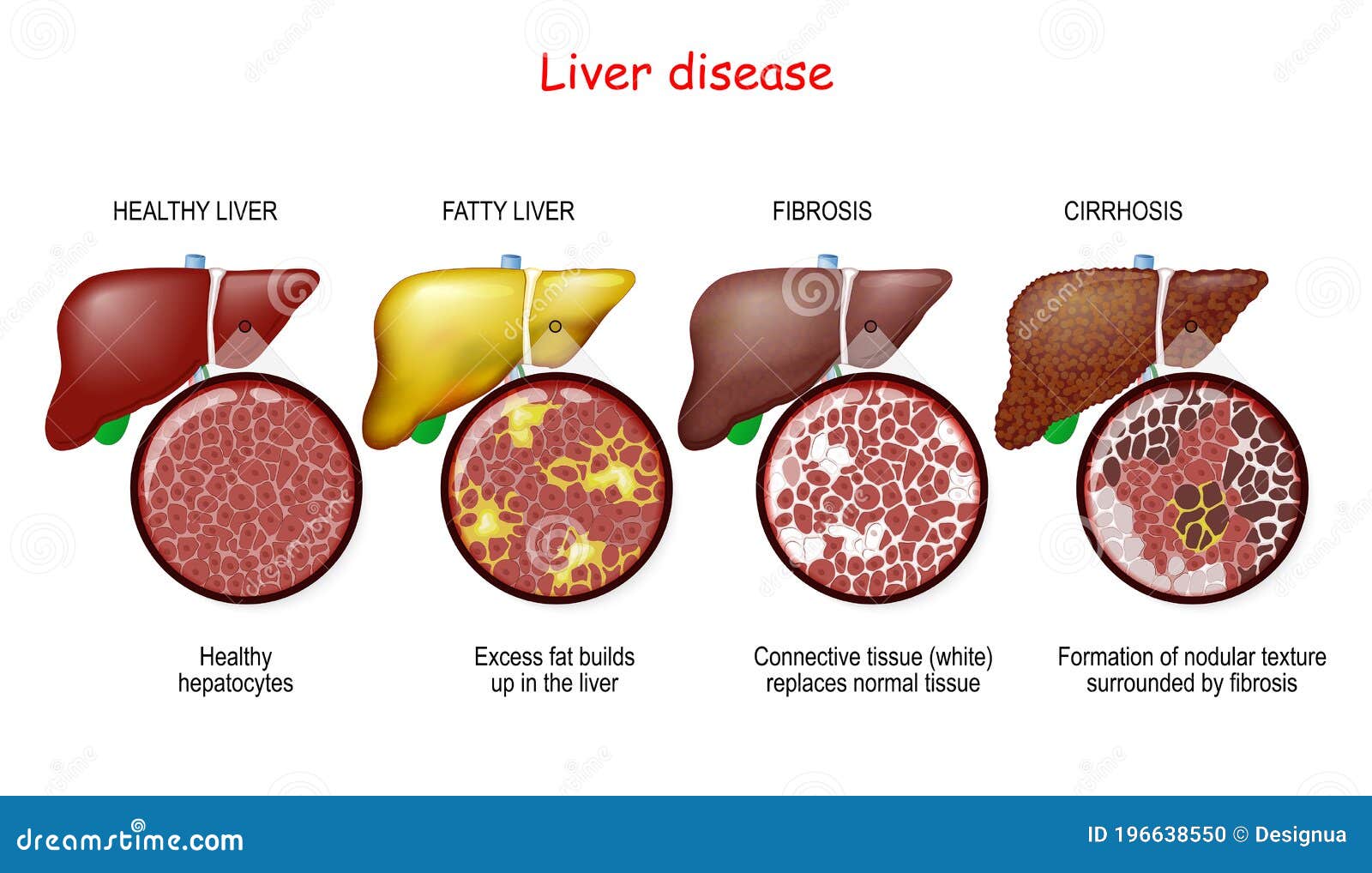
Why This Works
Burdock root is an excellent antioxidant that possesses strong diuretic and detoxifying properties (10). It is one of your best bets for restoring the normal functioning of your liver.
10. Coconut Oil
Image: Shutterstock
You Will Need
1 tablespoon of 100% virgin coconut oil
What You Have To Do
Consume a tablespoon of 100% virgin coconut oil every morning on an empty stomach.
How Often You Should Do This
You must do this once daily.
Why This Works
Coconut oil contains beneficial medium-chain fatty acids that exhibit antioxidant and detoxifying properties. The oil is also known to improve metabolism and is a great option to restore the health of your liver (11).
Related: 25 Benefits Of Coconut Oil, Types, How To Include In Your Diet
11. Green Tea
Image: Shutterstock
You Will Need
- 1 teaspoon of green tea
- 1 cup of hot water
- Honey
What You Have To Do
- Add a teaspoon of green tea to a cup of hot water.

- Allow it to steep for about 5 minutes and strain.
- Once the tea cools down a bit, add some honey to it.
- Consume it.
How Often You Should Do This
Drink green tea 2 to 3 times daily for best results.
Why This Works
Green tea contains beneficial polyphenolsi XNaturally occurring organic compounds found largely in fruits and vegetables with various health benefits. that have antioxidant and metabolic properties (12), (13). It is also a natural diuretic, which also facilitates the healing of liver disease (14).
Related: 13 Amazing Benefits Of Green Tea And Its Side Effects
Caution
Avoid drinking too much of green tea as it can worsen your condition.
All the above remedies require a few lifestyle changes for faster and effective results. Here are a few tips that you can incorporate into your daily life.
Prevention Tips
- Avoid alcohol intake.
- Keep a check on your weight.

- Reduce your risk of hepatitisi XAn inflammatory condition of the liver that happens when tissues of the body are injured or infected. infections by taking the necessary precautions.
- Follow a healthy and well-balanced diet.
- Reduce your intake of fatty and fried foods.
Given below is a detailed diet chart to assist you.
Liver Cirrhosis Diet
The following is a list of foods that you need to consume and avoid to restore the degrading health of your liver.
Foods To Consume
- Oats
- Whole grains
- Lean meat
- Fresh fruits and vegetables
- Fish
- Eggs
- Milk
- Beta-carotene rich foods like carrots
Foods To Avoid
- Salt
- Sugar
- Alcohol
- Fried or fatty foods
Liver cirrhosis is a medical condition in which continual damage to the liver may cause its healthy cells to be replaced by scar tissues. Prolonged alcohol abuse, fatty liver disease, blockage of bile ducts, Hepatitis infections, ingestion of toxic metals, and certain genetic or medical disorders may lead to cirrhosis of the liver. This liver disease can lead to many other ailments, impairing the functioning of other body parts and causing problems like ascites, portal hypertension,and viral hepatitis. This progressive condition is outlined into four distinct phases, with the first being the mildest. Home remedies to treat this condition need to be applied along with lifestyle and diet modifications. As liver cirrhosis can be a life-threatening disease, you need to work along with your healthcare provider and start treating it as promptly as possible.
This liver disease can lead to many other ailments, impairing the functioning of other body parts and causing problems like ascites, portal hypertension,and viral hepatitis. This progressive condition is outlined into four distinct phases, with the first being the mildest. Home remedies to treat this condition need to be applied along with lifestyle and diet modifications. As liver cirrhosis can be a life-threatening disease, you need to work along with your healthcare provider and start treating it as promptly as possible.
Did you find this article helpful? Let us know in the comments box right below.
Frequently Asked Questions
What is the treatment for cirrhosis of the liver?
Prevention is the best treatment when it comes to liver cirrhosis. However, those in the advanced stages of the disease can opt for a liver transplant.
What are the final stages of cirrhosis of the liver?
Once cirrhosis reaches its final stage, it cannot be cured. This stage is characterized by internal gastrointestinal bleeding.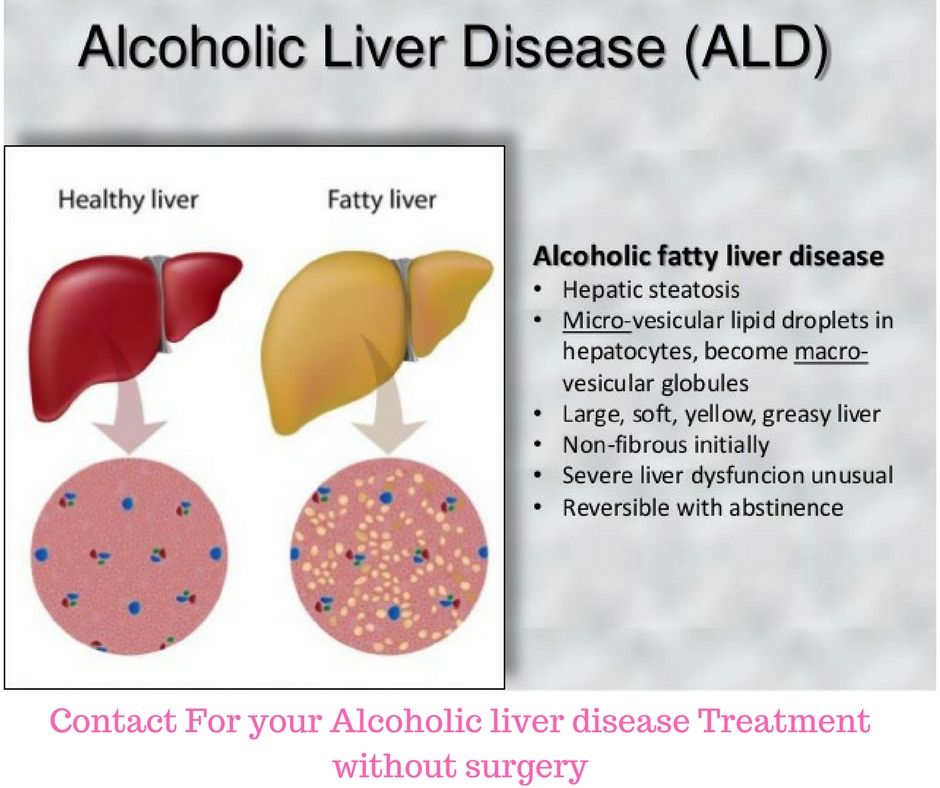
How long does it take to cure cirrhosis?
By making the required lifestyle changes, such as reducing salt and alcohol intake, individuals in the initial stage of liver cirrhosis can recover completely in a year. However, if you are in the later stages, you can never fully reverse the condition.
How does alcohol affect the liver?
Alcohol causes oxidative stress damage to the liver. Hence, those suffering from liver cirrhosis are strictly warned against consuming alcohol.
How many drinks in a day can cause liver damage?
Less than two standard drinks per day are considered relatively safe. More than six drinks daily will damage your liver with time.
What is the life expectancy of cirrhosis of the liver?
Cirrhosis of the liver is a severe and life-threatening condition, and life expectancy depends on the stage and type. For instance, compensated cirrhosis has a life expectancy of 9-12 years, whereas decompensated cirrhosis may have a life expectancy of 3 months to 2 years in most cases.
How quickly does cirrhosis progress?
Fatty liver disease may take anywhere between 10 to 30 years to progress and reach the cirrhosis stage, which is the final stage of liver damage.
Can you live without a liver?
No, it is not possible to live without a functioning liver as it is one of the vital organs of the body.
Key Takeaways
- Regular consumption of alcohol and the intake of toxic metals can lead to cirrhosis of the liver.
- Eating a diet rich in fiber, drinking plenty of water, and avoiding alcohol may help prevent cirrhosis symptoms.
- Some remedies like milk thistle, turmeric, and papaya seeds may help treat this condition naturally.
- But eating fried foods, salt, and sugar can worsen the issue.
With the correct treatment, liver cirrhosis can be effectively treated and you can feel like your old self. Check out this video to find out the quickest approach to treating it.
The following two tabs change content below.
- Reviewer
- Author
Treatment of liver cirrhosis at home. Folk remedies for cirrhosis of the liver.
06/09/2023
9354
Information checked by an expert to treatment
Cirrhosis is one of the most common liver diseases. It is the death of body cells. This occurs as a result of the proliferation of connective tissue, which replaces the liver. Thus, the body can no longer perform its functions. Around 300,000 people die each year from cirrhosis of the liver worldwide. Over the past 10 years, this trend has increased by 12%. An accurate diagnosis is established only by a doctor after a series of examinations. He can also recommend methods for treating cirrhosis of the liver at home. With the right approach, a person’s life can be extended by a couple of decades.
The information in this section should not be used for self-diagnosis or self-treatment. In case of pain or other exacerbation of the disease, only the attending physician should prescribe diagnostic tests. For diagnosis and proper treatment, you should contact a specialist.
For diagnosis and proper treatment, you should contact a specialist.
Causes are the key to treatment
Cirrhosis occurs in all age groups, but people over 40 are more susceptible to it. The main cause of liver cirrhosis is alcoholism. It occurs in 50% of patients with this disease. Other risk factors for cirrhosis include:
- Viral diseases of the liver;
- Metabolic disorder;
- Exposure to toxic substances and drugs;
- Congenital disorders of the liver;
- Diseases of the biliary tract;
- Intestinal surgery.
Every fourth case of cirrhosis is the result of complications of viral hepatitis. If jaundice is accompanied by alcoholism, then the disease will progress very quickly. Symptoms of liver cirrhosis require intervention and treatment with medicines and folk remedies.
Which doctor should I contact?
At the first signs of illness, you should go to see a qualified specialist. The following doctors are involved in diagnosing and treating this disease:
The following doctors are involved in diagnosing and treating this disease:
Our specialists
Suvan-ool Marina Anatolyevna
Therapist
Gastroenterologist
Pulmonologist
83%
Satisfied with the result of treatment
m.
Therapist
98%
Satisfied with the result of treatment
Metro Prospekt Mira
Vlasova Svetlana Sergeevna
Therapist
Gastroenterologist
Nutritionist
98%
Satisfied with the result of treatment
m.
Therapist
98%
Satisfied with the result of treatment
m. 0002 Satisfied with the result of treatment
0002 Satisfied with the result of treatment
m. Street 1905 years old
Torozova Olga Alexandrovna
Therapist
Gastroenterologist
98%
satisfied with the result of treatment
m. He will assess the condition of the skin and sclera. Also, the doctor will ask a number of questions that relate to the state of health:
- How long ago did the symptoms start?
- How often do you drink alcohol?
- Are there congenital liver pathologies?
One survey is not enough. To make an accurate diagnosis, the doctor will write a referral for hardware research methods. Based on the results obtained, he will make a course of treatment for the symptoms of liver cirrhosis with folk remedies and medicines.
Treatment
Therapy method is developed by the doctor, based on the stage of the disease and the individual characteristics of the patient. Cirrhosis of the liver is not a sentence, and if you follow all the instructions, then the result of the treatment will be successful. It involves taking drugs:
Cirrhosis of the liver is not a sentence, and if you follow all the instructions, then the result of the treatment will be successful. It involves taking drugs:
- For protection of liver cells;
- Diuretic;
- To strengthen the immune system.
Factors provoking the progression of cirrhosis should also be excluded. This is a complete rejection of alcohol and hard physical labor. The patient must follow a strict diet and daily routine.
Clinic Licenses
Liver Cleanse Folk Remedies: Effective Methods
Find out about the most effective liver cleanse folk remedies. Get rid of toxins and waste with natural ingredients. Learn how to use lemon, garlic, olive oil, and other foods to keep your liver healthy.
The liver is one of the most important organs in our body. It performs many functions, including cleaning the blood of toxins and toxins, bile synthesis, participation in metabolism, and many others. However, due to improper diet, stress, bad habits and other factors, the liver can become overloaded and polluted. In this case, it is necessary to cleanse the liver in order to restore its normal functioning.
However, due to improper diet, stress, bad habits and other factors, the liver can become overloaded and polluted. In this case, it is necessary to cleanse the liver in order to restore its normal functioning.
Modern medicine offers various methods of liver cleansing, but many of them are expensive and require medical supervision. At the same time, traditional medicine offers effective and affordable ways to cleanse the liver that can be done at home. Such methods are based on the use of natural ingredients that help remove toxins and toxins from the liver, restore its functions and improve the general condition of the body.
One of the most popular folk remedies for cleansing the liver is the use of herbal teas and infusions. For example, tansy, chamomile, mint, St. John’s wort and other plants contain biologically active substances that help remove toxins from the liver and improve its functions. Also, juices from beets, carrots, apples and grapefruit help to cleanse the liver and contribute to its recovery.
Why is it important to cleanse the liver?
The liver is one of the most important organs in our body with many functions. It is involved in metabolism, digestion, the storage of vitamins and minerals, and cleanses the body of toxins and waste.
Liver cleansing plays an important role in keeping the liver healthy and functioning properly. In today’s world where we are constantly exposed to contaminated food, chemical additives, alcohol, drugs and other harmful substances, the liver is often affected and can accumulate toxins and waste.
The accumulation of toxins in the liver can lead to various health problems such as chronic fatigue, poor digestion, skin problems, reduced immunity, and even the development of serious diseases such as cirrhosis of the liver or cancer.
Liver cleanse helps eliminate accumulated toxins and restore liver function. This can be achieved through various folk remedies such as herbs, nutritional supplements, and special diets.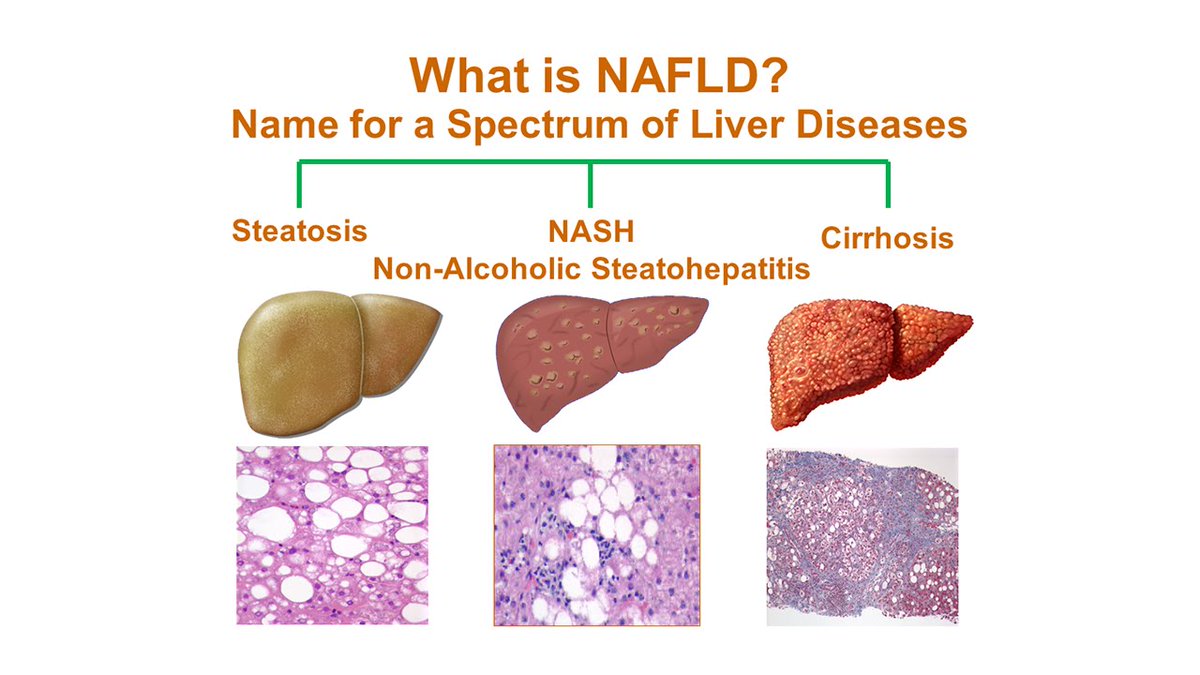 However, before starting a liver cleanse, it is always recommended to consult a doctor to ensure that you have no contraindications or other medical conditions that may be contraindicated for a liver cleanse.
However, before starting a liver cleanse, it is always recommended to consult a doctor to ensure that you have no contraindications or other medical conditions that may be contraindicated for a liver cleanse.
What problems can occur if the liver malfunctions?
Liver dysfunction can lead to various health problems. Firstly, the liver is the main filter of the body, and when its function is impaired, problems may arise in cleansing the blood of toxins and waste products. This can lead to poisoning of the body and the development of various diseases.
Liver dysfunction may also cause jaundice, which is manifested by an icteric tinge of the skin and sclera of the eyes. This is due to insufficient formation and excretion of bile, which leads to the accumulation of bilirubin in the body.
Other problems associated with liver dysfunction may include metabolic disorders such as carbohydrate and fat metabolism.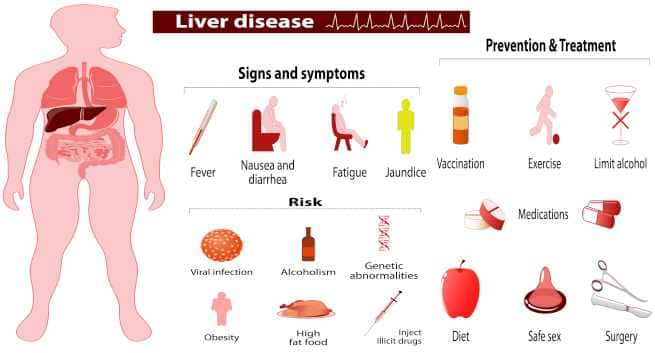 This can lead to the development of diabetes and obesity.
This can lead to the development of diabetes and obesity.
Also liver dysfunction may manifest as gastrointestinal disorders such as constipation or diarrhea. This is due to the fact that the liver plays an important role in digestion and the production of bile, the lack of which can cause disturbances in the digestive tract.
It is important to understand that
liver dysfunction can lead to serious consequences and requires timely treatment. Therefore, it is very important to consult a doctor for any symptoms that indicate a violation of the liver in order to prevent the development of complications and maintain health.
No
100%
What folk remedies help cleanse the liver?
The liver is an organ that performs important functions in the body, including cleaning the blood of toxins and waste. However, in modern conditions, the liver can be overloaded and needs additional support. To do this, there are folk remedies that help cleanse the liver and restore its functions.
To do this, there are folk remedies that help cleanse the liver and restore its functions.
Milk garlic is one of the most effective folk remedies for cleansing the liver. It contains alicin, a substance that helps to remove toxins from the body and improves metabolic processes in the liver. To prepare milk garlic, you need to grind 5-6 cloves of garlic and mix them with 200 ml of milk. The resulting mixture should be consumed every day at bedtime for 2-3 weeks.
Another effective folk remedy for cleansing the liver is a decoction of dandelion. It has a choleretic effect and improves liver function. To prepare a decoction, you need to collect fresh dandelion leaves, pour boiling water over them and leave for 15-20 minutes. After that, the broth should be filtered and consumed 1/3 cup 2-3 times a day for 2-3 weeks.
Beetroot juice is also an effective folk remedy for cleansing the liver. It contains antioxidants that help detoxify the liver and stimulate liver function.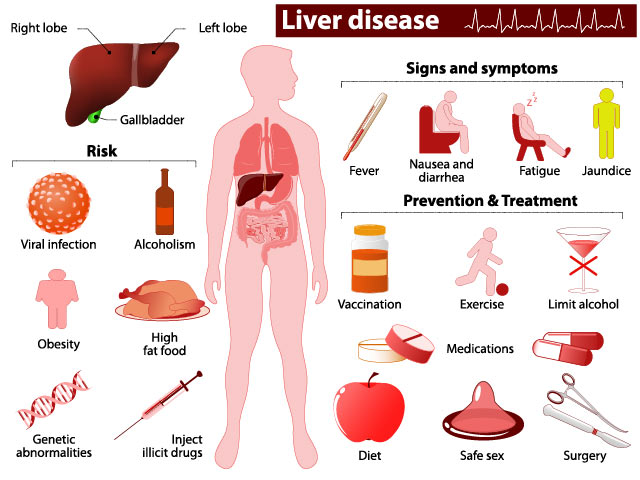 To make juice, you need to squeeze fresh beetroot and consume it every day for 1/2 cup for 2-3 weeks.
To make juice, you need to squeeze fresh beetroot and consume it every day for 1/2 cup for 2-3 weeks.
It is important to remember that before you start cleansing the liver with folk remedies, you need to consult a doctor to rule out possible contraindications and assess the condition of the body.
Milk drinks for liver cleansing
Milk drinks are one of the effective ways to cleanse the liver. They contain many beneficial substances that help improve liver function and speed up the cleansing process.
One of the most popular dairy drinks for liver cleansing is kefir. Kefir contains probiotics that help restore the natural microflora of the liver and improve its functioning. In addition, kefir has diuretic properties, which helps remove toxins from the body.
Another useful dairy drink for liver cleansing is yogurt. Yogurt contains probiotics, which help fight harmful bacteria in the liver and improve liver function. In addition, yogurt is rich in calcium, which contributes to the breakdown of fatty deposits in the liver.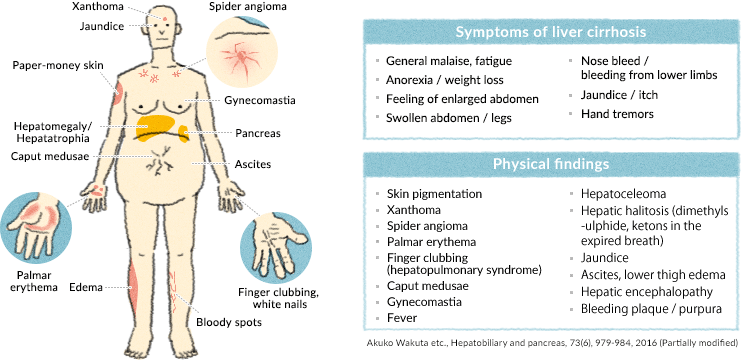
It is also worth noting milk as a healthy milk drink for cleansing the liver. Milk contains vitamin D, which helps to improve liver function and promote liver cleansing. In addition, milk contains protein that helps repair damaged liver tissue.
It is important to remember that dairy drinks should be consumed in moderation and as part of a healthy diet. It is best to choose low-fat dairy options and eat them in combination with other healthy liver cleanse foods.
Herbal Liver Cleanse
Liver cleanse is an important procedure for maintaining the health of the body. Herbs are one of the most effective and safest ways to cleanse the liver of toxins and gallstones.
One of the most popular herbal liver cleanses is milk thistle. This plant contains silymarin, which protects the liver from harmful effects and promotes its regeneration. Milk thistle can be consumed as an herbal tea or as a food supplement.
Another effective herbal liver cleanser is dandelion. It stimulates the production of bile and helps to remove toxins from the body. Dandelion can be consumed as herbal tea, juice, or added to salads and other dishes.
It stimulates the production of bile and helps to remove toxins from the body. Dandelion can be consumed as herbal tea, juice, or added to salads and other dishes.
Parsley is also a useful herbal remedy for liver cleansing. It contains vitamins and minerals that help improve liver function. Parsley can be added to salads, soups, or consumed as a juice.
Liver cleansing with herbs can be carried out both as a course treatment and as a continuous use. However, before starting to use herbal remedies, it is recommended to consult a doctor or herbalist in order to take into account the individual characteristics of the body and avoid possible side effects.
Fruits and vegetables good for the liver
The liver plays an important role in cleansing the body of toxins and toxins. To maintain its health and effective work, it is necessary to consume certain fruits and vegetables, which contribute to its purification and restoration.
Grapefruit is one of the most beneficial foods for the liver.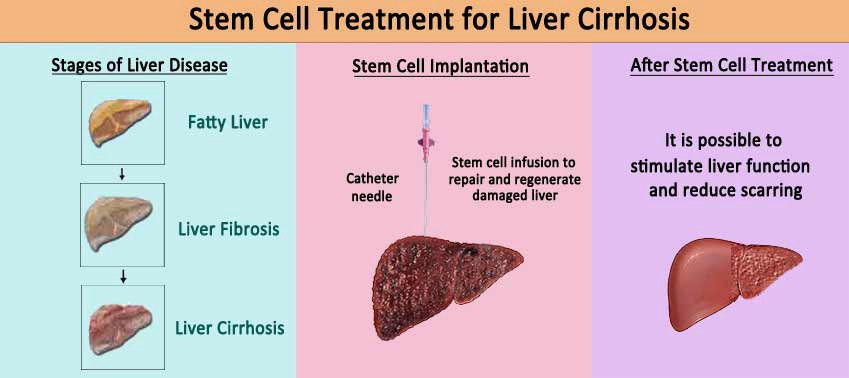 It is rich in antioxidants that help fight harmful substances and protect the liver from damage. In addition, grapefruit contains vitamin C, which contributes to the production of enzymes needed to cleanse the liver.
It is rich in antioxidants that help fight harmful substances and protect the liver from damage. In addition, grapefruit contains vitamin C, which contributes to the production of enzymes needed to cleanse the liver.
Another fruit that is good for the liver is the avocado. It contains glutathione, a powerful antioxidant that aids the liver in its detoxification process. Avocados also contain monounsaturated fats, which help lower blood cholesterol levels and improve overall liver health.
Among vegetables, cabbage and broccoli are especially useful for the liver. They contain substances that activate the processes of cleansing the liver and contribute to its recovery. Cabbage is also rich in vitamin C, which enhances its beneficial properties and helps the liver deal with toxins.
Don’t forget about the bow. It contains alicin, a substance that helps the liver fight harmful substances. Onions are also an excellent source of sulfur, which is involved in detoxification processes and helps cleanse the liver.
Integrating these fruits and vegetables into your diet will help keep your liver healthy and provide it with the nutrients it needs to function. However, before making changes to your diet, it’s always a good idea to consult your doctor or dietitian.
Foods to Avoid in a Liver Cleanse
Liver cleansing is an important procedure to keep the liver healthy and functioning properly. However, when performing a liver cleanse, it is necessary to exclude certain foods from your diet in order to achieve maximum effectiveness of the procedure.
First, avoid foods rich in animal fats such as butter, cream, lard and smoked meats. Animal fats can put more stress on the liver and make it harder to cleanse.
Foods containing artificial additives, preservatives and colorants should also be avoided. These substances can be toxic to the liver and make it difficult to cleanse. Therefore, it is recommended to pay attention to the composition of products and prefer natural and organic alternatives.
In addition, avoid foods high in sugar and refined carbohydrates. The liver plays an important role in the processing of sugar, and excess sugar in the diet can adversely affect liver function.
Finally, you should limit your consumption of alcohol and coffee. Alcohol and coffee can seriously damage the liver and make it difficult to cleanse. It is recommended to eliminate these drinks completely or significantly reduce their consumption during a liver cleanse.
What results can be expected after a liver cleanse?
Natural liver cleansing can lead to various positive results. Firstly, such a procedure can improve the general condition of the body. The liver plays an important role in digestion, detoxification, and metabolism, so cleansing it helps improve all of these systems.
Liver cleansing can also improve gallbladder function. During the procedure, gallstones and other deposits are removed from the liver, which helps reduce the risk of new stones forming and prevents them from accumulating in the gallbladder.
After a liver cleanse, many people notice an improvement in their general well-being. They feel a surge of energy, improved mood and increased concentration. Also, a liver cleanse can help fight chronic fatigue and reduce stress levels.
In addition, liver cleansing can help improve skin function. The liver plays an important role in detoxifying the body, and if it functions properly, the skin becomes healthier and more radiant.
But it must be remembered that the results of liver cleansing can be individual. It is possible that in some people the effect will be more noticeable, while in others it will be less pronounced. It all depends on the state of the liver and the body as a whole. Therefore, before performing a liver cleanse, it is recommended to consult a doctor or naturopath in order to choose the most appropriate method and assess the possible risks and contraindications.
Q&A:
What folk remedies help cleanse the liver?
There are several effective folk remedies for liver cleansing.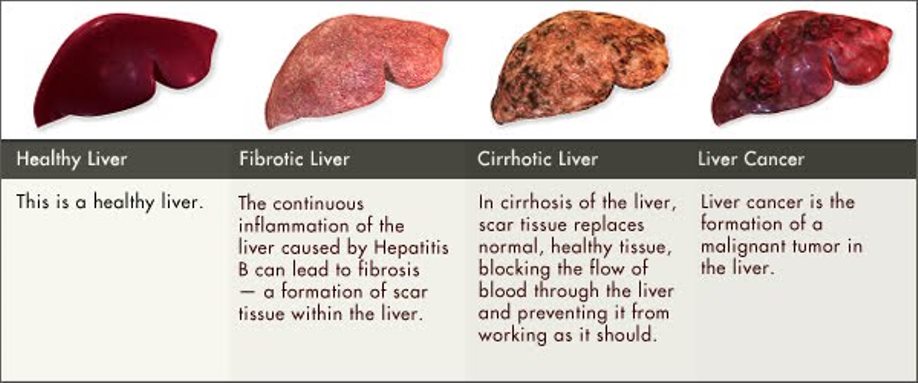 Some of these include eating certain foods such as olive oil, apple juice, or garlic. Other methods include the use of herbs such as milk thistle or chamomile. All of these remedies can help improve liver function and detoxify the liver.
Some of these include eating certain foods such as olive oil, apple juice, or garlic. Other methods include the use of herbs such as milk thistle or chamomile. All of these remedies can help improve liver function and detoxify the liver.
How to use olive oil to cleanse the liver?
Olive oil is one of the most popular folk remedies for cleansing the liver. For this method, you need to mix olive oil with freshly squeezed lemon juice and drink this mixture in the morning on an empty stomach. Olive oil helps relieve liver congestion and helps cleanse it.
Which product is considered good for cleansing the liver?
Apples are considered a good liver cleanser. They are rich in pectin, which helps remove toxins from the body. It is recommended to consume apples in the form of fresh juice or eat them whole to get the maximum benefit for the liver.
What are the benefits of using folk remedies for liver cleansing?
The use of folk remedies for liver cleansing has several advantages.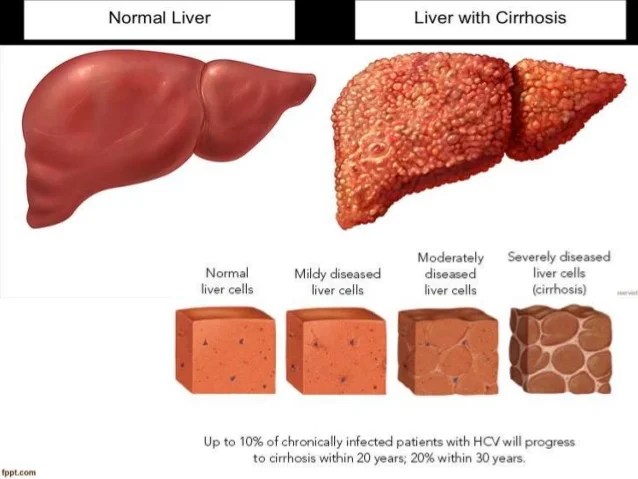





 and Wilson’s diseasei XA rare inherited disorder that occurs when the body accumulates excessive amounts of copper, especially in the liver and brain. that cause accumulation of iron or copper in the liver
and Wilson’s diseasei XA rare inherited disorder that occurs when the body accumulates excessive amounts of copper, especially in the liver and brain. that cause accumulation of iron or copper in the liver